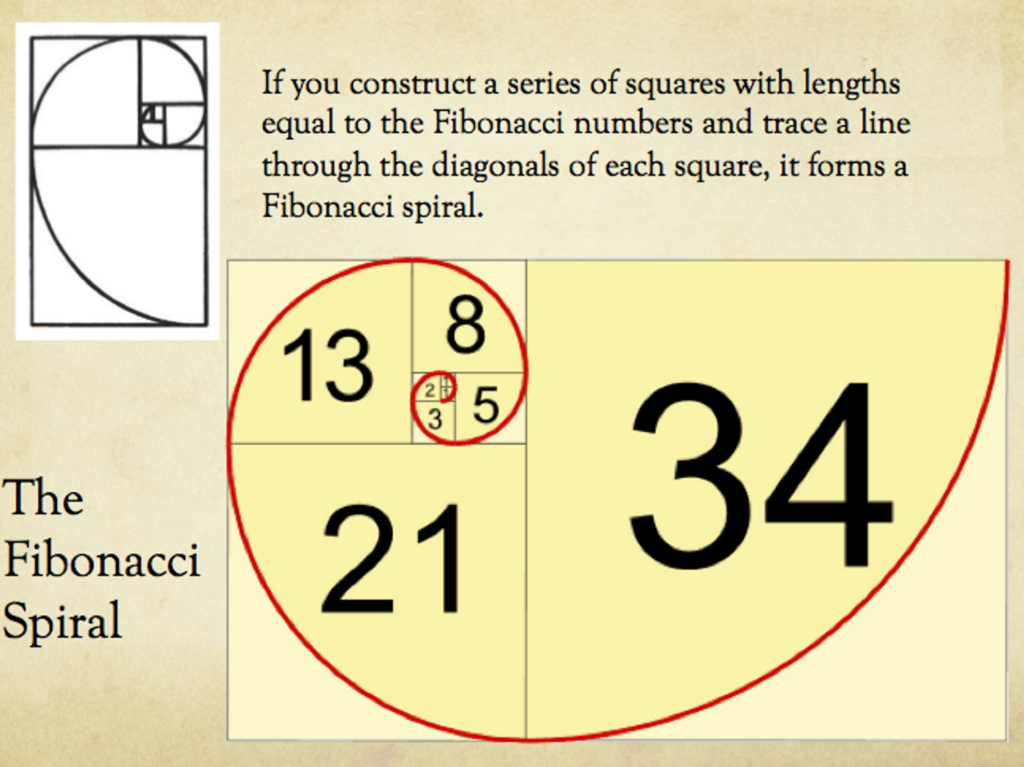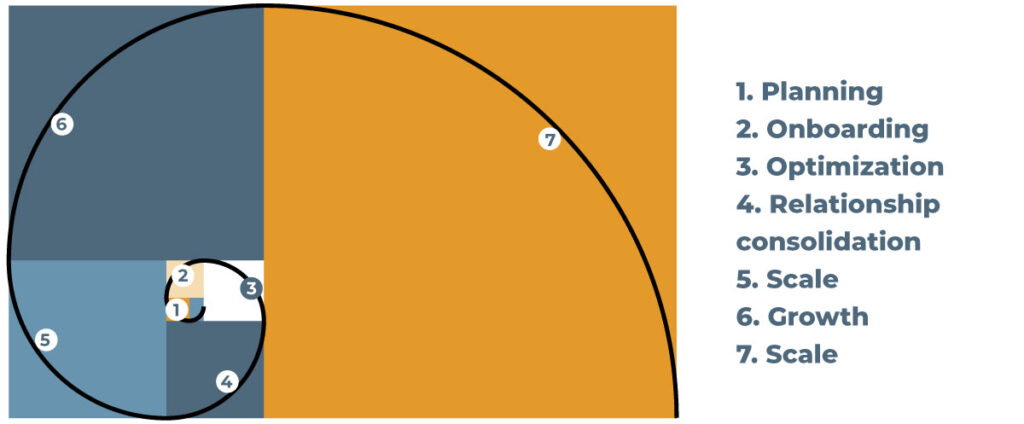Have you ever wondered why your affiliate program isn’t growing in a straight line? Or skyrocketing in an upward curve? How is it supposed to evolve in time and what expectations should you have?
Building a sustainable affiliate program which can help your business increase brand reach and build sales momentum is a skill. It’s vitally important to make sure you understand all the moving pieces and that you ensure you have the expertise, support, tools and resources you need to make the best start.
When doing everything the right way, affiliate programs actually grow more like what is known as a Fibonacci sequence.
What is the Fibonacci Sequence?
The Fibonacci sequence is a series of numbers where the next number is found by adding up the two numbers before it:
0, 1, 1, 2, 3, 5, 8, 13, 21, 34, . . .
- We got 2 by adding the 2 numbers before it (1 + 1),
- 5 is 2 + 3,
- and so on
When we make squares with those widths, we get a nice spiral.

Do you see how the squares fit neatly together? 3 and 5 make 8, 8 and 13 make 21, and so on.
The Fibonacci sequence can be found everywhere in nature – you can find it present in the shell of a snail, which is probably its most famous representation.

The Fibonacci sequence can be used in almost all aspects of life, used to predict the behaviour, growth or decline of many things in nature or even the stock market and financial indexes.
And today we’re going to explore its role in affiliate marketing.
How do Fibonacci number sequences apply to affiliate marketing?
Just because you launch an affiliate program doesn’t mean anyone is going to queue up outside your door to join it. It could take months to build momentum, depending on a number of factors, such as how strong your brand is, what online presence do you have, what is your average conversion rate to name a few, and the strategy and marketing plan you have put in place to help you launch your brand. So this is a long-term game plan for the business at the start.
Typically, a new affiliate program would take between nine to twelve months to start paying any dividends although this varies from market to market. If you use an expert agency or consultant well versed in affiliate marketing strategy you can of course deliver results a bit quicker, because they will already have a good idea of what works and what doesn’t.
Each step you take during the launch requires time to bed in, test, analyse and optimise for better results in the next phase.

Phase 1: Planning
This is where you decide key objectives for your program in relation to technology, whether you use in-house or network offerings, evaluating your program pricing, implementing your service models and establishing SLA‘s and resourcing. And very importantly, how both parties will monitor progress and performance and how the tracking of all that will be done.
The more thorough the tracking and the in-depth visibility into all the various components and segments of traffic, the faster you can gather important information to carry out fast optimization. So take time to prepare this and resolve technical requirements. The most pressing question at the start of it all is always What are the top affiliates in X market for Y product & starting off with the top SEO affiliates is your best bet for a good start and efficient spending.
Phase 2: Onboarding
Here technical integration and customisations begin, and your program framework is set up to allow affiliates to be onboarded.
Phase 3: Optimization
In this phase you’d be tweaking a lot of campaigns, traffic sources and affiliate offers, this is very much looking at each individual deal set out for your affiliate partners and ensuring that your customer LTV generated by each of your affiliates makes sense in terms of the deal you are providing.
Phase 4: Relationship consolidation
Now you will start to see some revenue growth (after investment costs to get this channel started). Campaigns and publishers will be testing your offers and seeing how you convert. You’ll be analysing data and optimising campaigns and tweaking delivery. You’ll start to build solid relationships based on trust and get access to more of your publisher’s traffic sources and placements on their sites as they begin to work with you and benchmark you to competitors.
Phase 5: Scale
At this point you would know how your offer and program benchmarks to the rest of your competitors, you’ll have key partnerships established and you’ll be seeing incremental growth and revenue ROI on the relationships you have. Recruitment and promotion remain a focus point in this phase.
Phase 6: Growth
At this point, you will be looking for ways to grow your program, add new products, open new regions and continue to increase affiliate partnerships to expand your brand reach.
Phase 7: Sustain
Here you’ll start to innovate to obtain new growth segments. Sometimes agencies will be brought in to do optimisation and strategic customisation to your platform and you’ll start to look at ways to grow your affiliate channel strategically along with your other marketing functions.
All the while, you also need to constantly be watching the environment around you to benchmark yourself against your competitors. What are they doing that you aren’t? You should always be introducing something that makes you stand out and make sure your affiliates are seeing you regularly and hearing about your program offers and benefits too. Your marketing plan is just as important as your launch and you can use this to ensure you hit profitable targets as described in the phases above.
For more information about our igaming affiliate service or if you need help with your affiliate programme management and strategy simply get in touch with us

